Abstract
The in vitro and in vivo properties of a new 1-difluorophenyl-6-fluoroquinolone, temafloxacin hydrochloride (A-62254), were compared with those of difloxacin and ciprofloxacin. Temafloxacin hydrochloride was as active as ciprofloxacin and difloxacin against staphylococci and as active as ciprofloxacin and 2 twofold dilutions more active than difloxacin against streptococci. Against gram-negative enteric bacteria and Pseudomonas aeruginosa, temafloxacin hydrochloride was 2 twofold dilutions more active than difloxacin but 2 to 4 twofold dilutions less active than ciprofloxacin. The MICs of temafloxacin hydrochloride and difloxacin were increased by 2 to 5 twofold dilutions in urine at pH 6.5 compared with 4 to 5 twofold-dilution increases in the MICs of ciprofloxacin. The MICs of temafloxacin hydrochloride, difloxacin, and ciprofloxacin were increased by 1 to 3 twofold dilutions in serum. The MICs of temafloxacin hydrochloride, difloxacin, and ciprofloxacin were the same or within 1 to 2 twofold dilutions at pHs 6.5, 7.2, and 8.0. When administered orally in mouse protection tests, temafloxacin hydrochloride was as active as difloxacin and 5 to 10 times more active than ciprofloxacin against infections with Staphylococcus aureus and streptococci. Against infections with gram-negative enteric bacteria and P. aeruginosa, temafloxacin hydrochloride was as active as difloxacin and ciprofloxacin. Temafloxacin hydrochloride was three times less active than difloxacin but was five times more active than ciprofloxacin against infections with Salmonella typhimurium. Temafloxacin hydrochloride was as active as difloxacin and ciprofloxacin against P. aeruginosa and Proteus mirabilis pyelonephritis in mice. The peak serum concentration and serum half-life of temafloxacin hydrochloride in mice were approximately one-half and one-sixth, respectively, that of difloxacin after oral administration. The peak serum concentration of temafloxacin hydrochloride in mice after oral administration was six times higher than that of ciprofloxacin, and the serum half-life was equal to that of ciprofloxacin.
Full text
PDF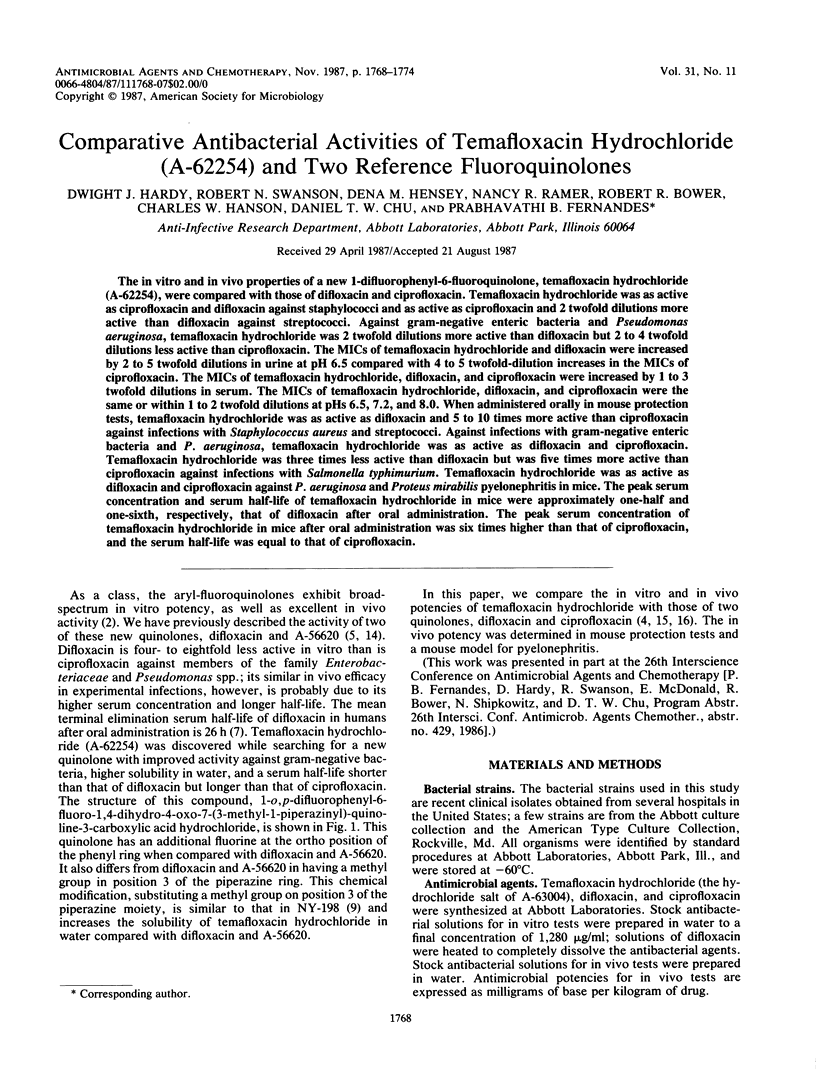
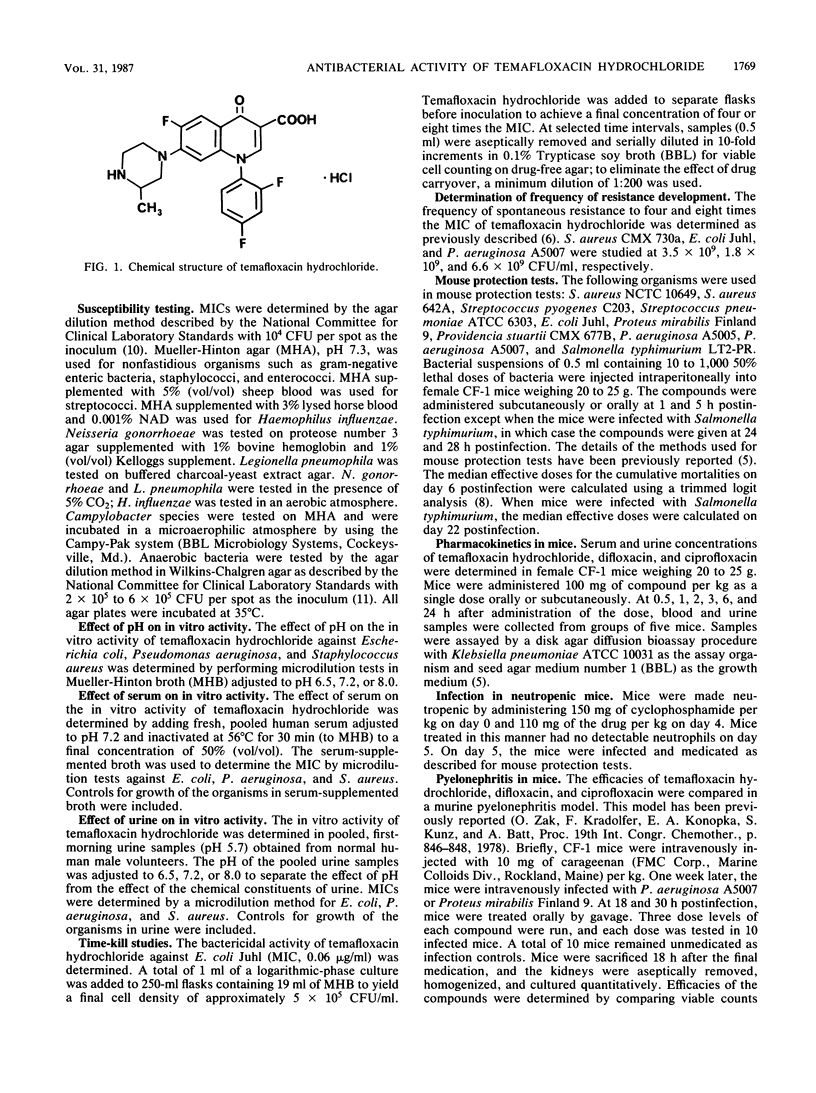
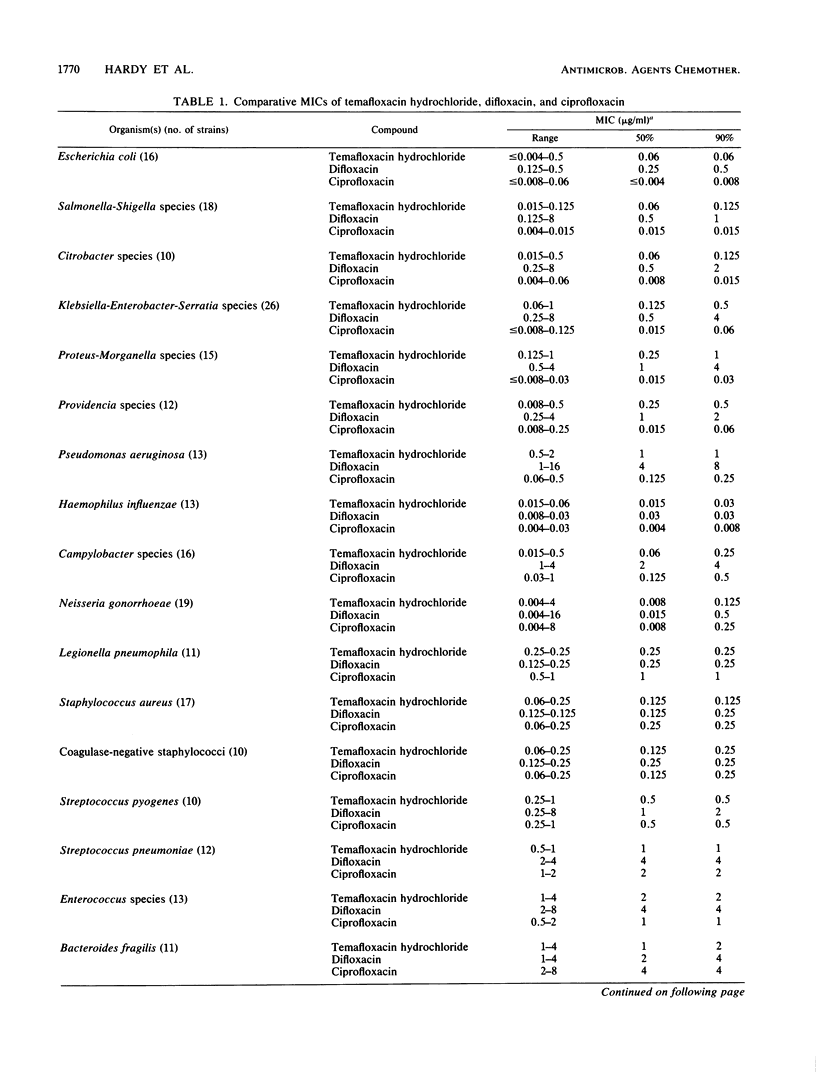
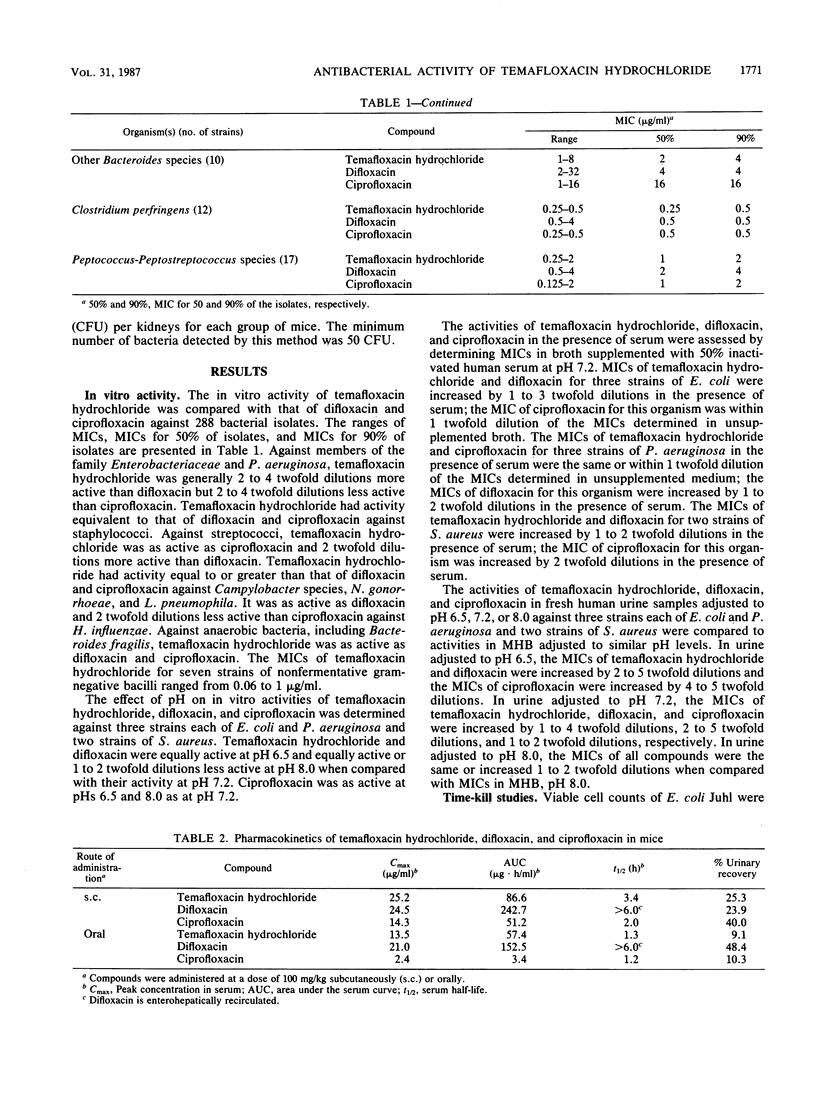
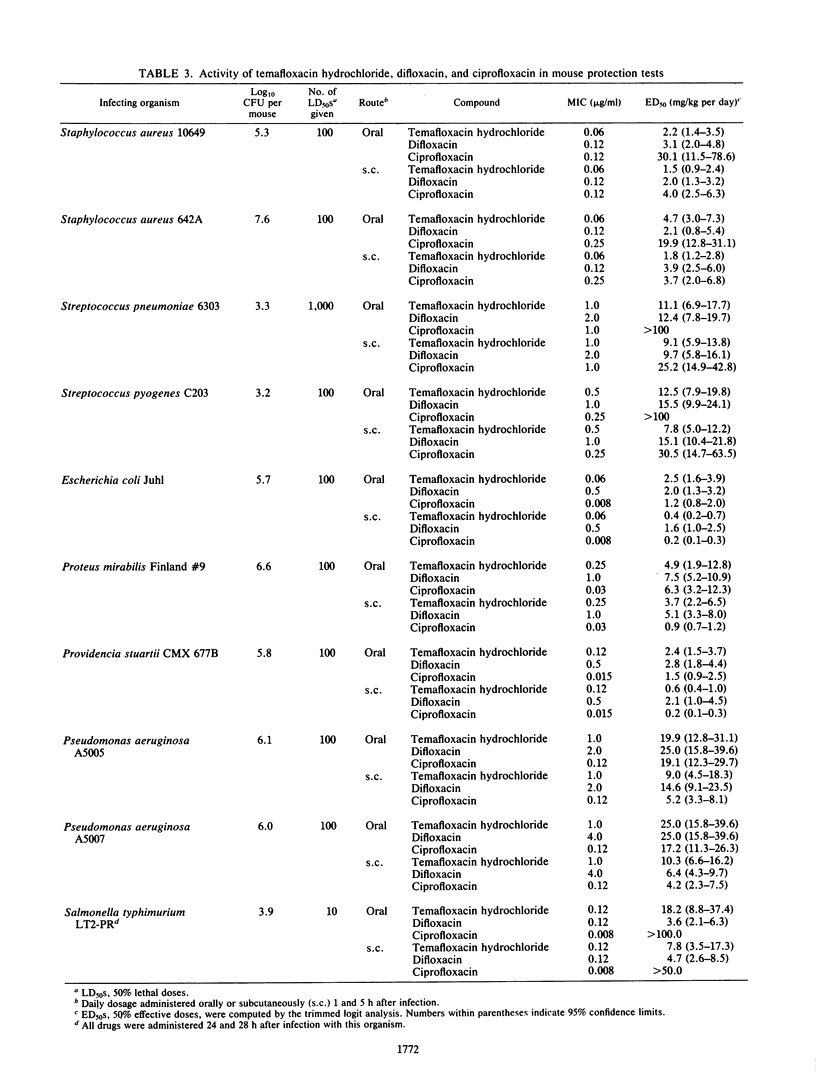
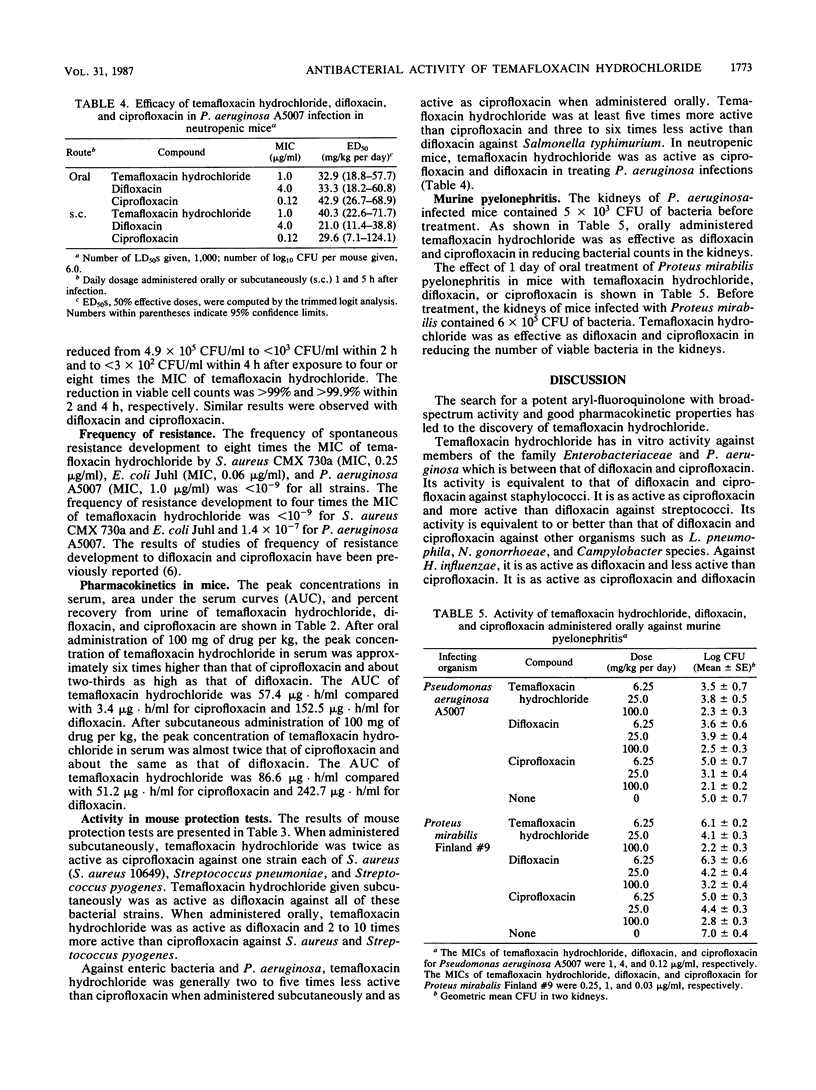
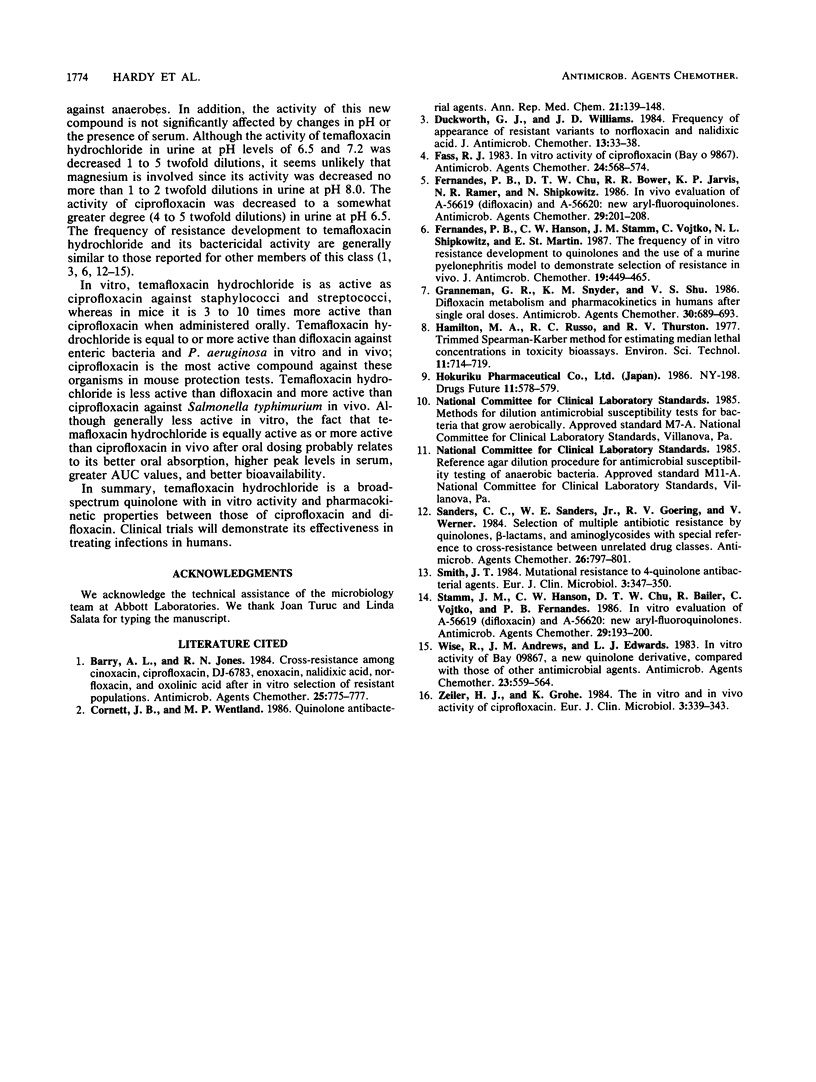
Selected References
These references are in PubMed. This may not be the complete list of references from this article.
- Barry A. L., Jones R. N. Cross-resistance among cinoxacin, ciprofloxacin, DJ-6783, enoxacin, nalidixic acid, norfloxacin, and oxolinic acid after in vitro selection of resistant populations. Antimicrob Agents Chemother. 1984 Jun;25(6):775–777. doi: 10.1128/aac.25.6.775. [DOI] [PMC free article] [PubMed] [Google Scholar]
- Duckworth G. J., Williams J. D. Frequency of appearance of resistant variants to norfloxacin and nalidixic acid. J Antimicrob Chemother. 1984 May;13 (Suppl B):33–38. doi: 10.1093/jac/13.suppl_b.33. [DOI] [PubMed] [Google Scholar]
- Fass R. J. In vitro activity of ciprofloxacin (Bay o 9867). Antimicrob Agents Chemother. 1983 Oct;24(4):568–574. doi: 10.1128/aac.24.4.568. [DOI] [PMC free article] [PubMed] [Google Scholar]
- Fernandes P. B., Chu D. T., Bower R. R., Jarvis K. P., Ramer N. R., Shipkowitz N. In vivo evaluation of A-56619 (difloxacin) and A-56620: new aryl-fluoroquinolones. Antimicrob Agents Chemother. 1986 Feb;29(2):201–208. doi: 10.1128/aac.29.2.201. [DOI] [PMC free article] [PubMed] [Google Scholar]
- Fernandes P. B., Hanson C. W., Stamm J. M., Vojtko C., Shipkowitz N. L., St Martin E. The frequency of in-vitro resistance development to fluoroquinolones and the use of a murine pyelonephritis model to demonstrate selection of resistance in vivo. J Antimicrob Chemother. 1987 Apr;19(4):449–465. doi: 10.1093/jac/19.4.449. [DOI] [PubMed] [Google Scholar]
- Granneman G. R., Snyder K. M., Shu V. S. Difloxacin metabolism and pharmacokinetics in humans after single oral doses. Antimicrob Agents Chemother. 1986 Nov;30(5):689–693. doi: 10.1128/aac.30.5.689. [DOI] [PMC free article] [PubMed] [Google Scholar]
- Sanders C. C., Sanders W. E., Jr, Goering R. V., Werner V. Selection of multiple antibiotic resistance by quinolones, beta-lactams, and aminoglycosides with special reference to cross-resistance between unrelated drug classes. Antimicrob Agents Chemother. 1984 Dec;26(6):797–801. doi: 10.1128/aac.26.6.797. [DOI] [PMC free article] [PubMed] [Google Scholar]
- Smith J. T. Mutational resistance to 4-quinolone antibacterial agents. Eur J Clin Microbiol. 1984 Aug;3(4):347–350. doi: 10.1007/BF01977492. [DOI] [PubMed] [Google Scholar]
- Stamm J. M., Hanson C. W., Chu D. T., Bailer R., Vojtko C., Fernandes P. B. In vitro evaluation of A-56619 (difloxacin) and A-56620: new aryl-fluoroquinolones. Antimicrob Agents Chemother. 1986 Feb;29(2):193–200. doi: 10.1128/aac.29.2.193. [DOI] [PMC free article] [PubMed] [Google Scholar]
- Wise R., Andrews J. M., Edwards L. J. In vitro activity of Bay 09867, a new quinoline derivative, compared with those of other antimicrobial agents. Antimicrob Agents Chemother. 1983 Apr;23(4):559–564. doi: 10.1128/aac.23.4.559. [DOI] [PMC free article] [PubMed] [Google Scholar]
- Zeiler H. J., Grohe K. The in vitro and in vivo activity of ciprofloxacin. Eur J Clin Microbiol. 1984 Aug;3(4):339–343. doi: 10.1007/BF01977490. [DOI] [PubMed] [Google Scholar]


